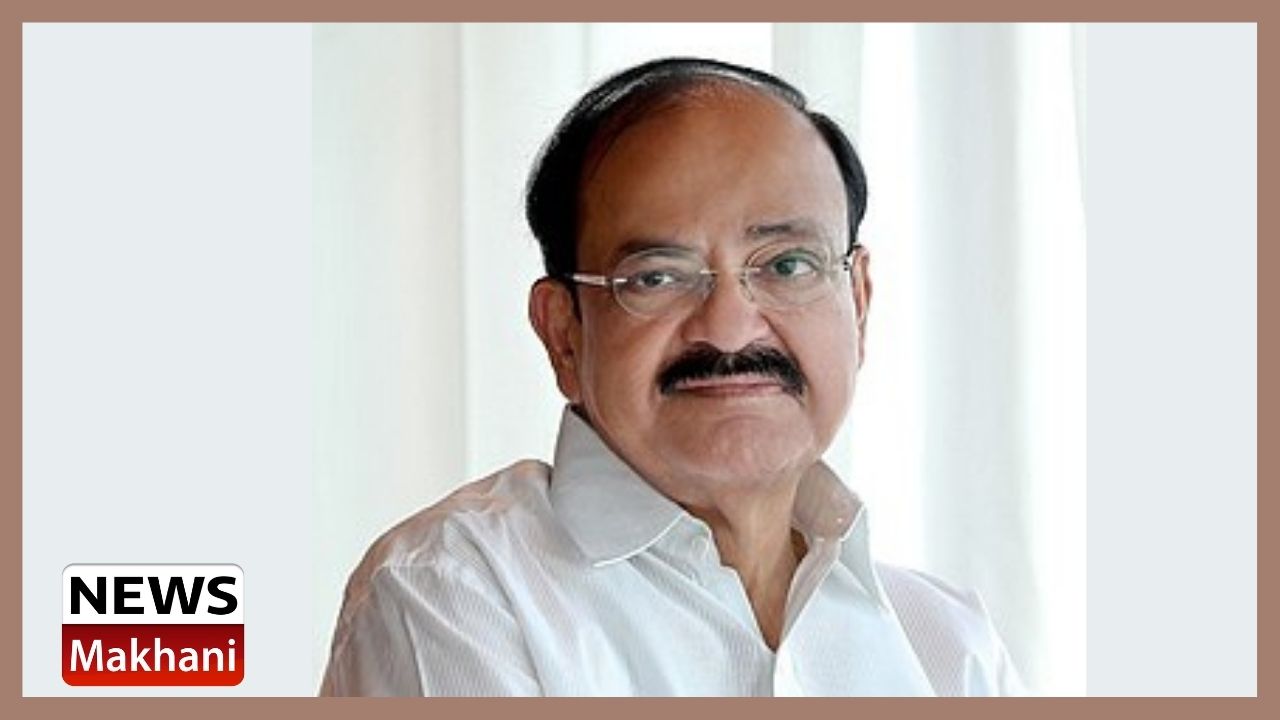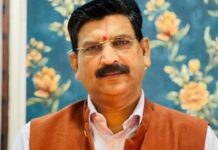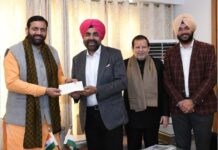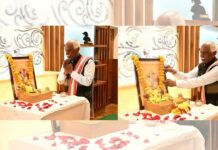Says, our approach is of peaceful coexistence and to deter the forces of terror and disruption
Vice President exhorts scientists to develop cutting-edge technologies indigenously to make India self-reliant in defence sector
Calls for developing an ‘Aerospace Hub’ by creating synergy between academia and industry
Involve private partners in defence projects for fruitful results – Vice President
IAF’s order for 83 Tejas fighter jets is a big boost for aerospace sector in India – Vice President
Vice President visits HAL’s aircraft manufacturing facilities in Bengaluru
Says, HAL’s growth is synonymous with the growth of Indian Aeronautical industry
VP calls for an inclusive, regionally balanced and environmentally sustainable development agenda
The Vice President, Shri M. Venkaiah Naidu today emphasized the need to develop cutting-edge technologies indigenously to make India self-reliant in defence technology and emerge as an export hub of modern military hardware.
Addressing scientists and engineers of Hindustan Aeronautical Limited and Aeronautical Development Agency at HAL complex, Bengaluru, the Vice President said that indigenous products will play a key role in leapfrogging India as an Aerospace and Defence powerhouse in the coming years.
While noting India’s capability to manufacture the state-of-the-art missiles, satellites and space vehicles, he said, “the paradox remains that we are still among the largest arms importers in the world”. He called for changing this situation by quickening the pace of indigenous development of critical technologies.
Drawing attention to multiple security challenges faced by the country due to a highly complex geopolitical environment, the Vice President lauded the security forces for their exemplary courage and professionalism. “It is our duty to ensure that our armed forces are fully equipped to handle any challenge and repel any security threat firmly”, he said.
The Vice President said that India wants friendly relations with all its neighbours but some countries are funding and supporting terrorism against India and some harbour expansionist tendencies. “Therefore, security and safety of our borders is very important for the peace and prosperity of the nation”, he added. Stressing that India has never been expansionist in its outlook, Shri Naidu said that our approach is of peaceful coexistence and to deter the forces of terror and disruption. “India wants to become strong for the progress and development of its people,” he said.
Referring to several policy initiatives by the Government to promote indigenization and self-reliance in defence manufacturing, Shri Naidu underlined the need to involve private partners in defence projects for fruitful results. “We will have to depend on strategic partnerships, technology sharing and teamwork to ensure that we build competitive products which are comparable with the best from across the globe”, he said.
He said that measures such as an increase in the FDI limit for the defence sector, the decision to set up two defence corridors in UP and Tamil Nadu and notification of two positive indigenization lists by the Ministry of Defence offer a great opportunity to the Indian defence industry.
Praising the involvement of a large number of Indian companies with the HAL in the recently concluded deal for 83 Tejas fighter jets by the Indian Air Force, the Vice President said that such projects have the potential to transform the Indian aerospace manufacturing ecosystem into a vibrant Atmanirbhar-self-sustaining one.
Noting that the innovation process in the Aerospace industry involves high levels of risk and costly investments, he opined that this process can be accelerated through active collaboration between the industry and researchers. Emphasizing the need to attract the brightest minds in R&D in the aerospace and defence sectors, Shri Naidu called for creating a synergy between academia and industry for developing an ‘Aerospace Hub’. “This would promote innovation and address the issue of skills shortage in this key sector,” he said.
Earlier in the day, the Vice President visited HAL’s LCA Tejas manufacturing facility and expressed his appreciation to scientists and engineers of ADA and HAL for building this state-of-the-art modern fighter aircraft. He expressed confidence that the 4+ generation aircraft would be a potent platform to meet the operational requirements of the Indian Air Force.
The Vice President was equally impressed by the HAL’s helicopter facility which showcased indigenously developed Advanced Light Helicopter, Dhruv, Light Combat Helicopter and a Light Utility Helicopter that will replace Cheetah/Chetak helicopters.
The Vice President lauded the stellar contribution of HAL and DRDO laboratories to national security and expressed confidence that with designing of more potent aircraft like the LCA Mk2, Advanced Medium Combat Aircraft (AMCA) and Twin-Engine Deck Based Fighter (TEDBF), the country would no longer have to be dependent on foreign nations to meet its fighter aircraft needs.
Stating that HAL’s growth has been synonymous with the growth of the Aeronautical industry in India, he reiterated that self-reliance in defence and aerospace technology was important to create a ‘Samarth Aur Saksham Bharat’ (Able and capable India).He said that he felt proud and reassured of the capabilities of Indian researches after visiting this visit to HAL facilities.
Drawing attention to impending ‘digitization of manufacturing’, he said that it would bring profound changes in the aerospace sector and exhorted HAL to brace up and adapt to Industry 4.0. He also underlined the importance of ensuring customer satisfaction for HAL to emerge as a global player in the aviation space.
Recognizing the need to unleash the power of innovation to find solutions to our various challenges faced by mankind, Shri Naidu stressed that our economic development agenda needs to be socially and economically more inclusive, regionally balanced and environmentally sustainable.
Governor of Karnataka, Shri ThaawarchandGehlot, HAL Chairman, Shri R.Madhavan and senior officials and scientists from HAL and ADA were present on the occasion.
Following is the full text of speech –
“I am happy to be here with the HAL family today.
Hindustan Aeronautics Limited, over the last 80 years, has played an important role in the security, safety and technological advancement of our nation. HAL’s growth has been synonymous with the growth of the Aeronautical industry in India.
I would also like to greet the scientists from Aeronautical Development Agency (ADA) who are present here. ADA has spearheaded the design of LCA Tejas which we now see in production at HAL. This advanced fighter aircraft and its cutting-edge technologies developed indigenously have helped the country position itself to achieve Aatmanirbharta for Combat Aircraft in the coming years.
This is my first visit to HAL and I am happy to meet you at a place from where Indian Aeronautics had taken wings and continues to soar further exploring newer heights. Bengaluru is considered the aviation capital of the country today and it has earned this title because around these hills and valleys, great visionaries gave a shape and structure to their vision of Indian Aviation. It gives me immense pleasure to join you all in the celebration of HAL’s rich contribution to India’s self-reliance in the critical sectors of Aerospace and Defence.
Dear sisters and brothers,
Today India is capable of manufacturing state-of-the art space launch vehicles, missiles, aircraft and other defence equipment. The paradox remains that we are still among the largest arms importers in the world. This needs to change and the pace of indigenous development of critical technologies needs to be catalyzed further.
Today, we are facing multiple security challenges in a highly complex geo-political environment. Our men and women in uniform function in an exceedingly difficult security environment, but they have always faced all challenges that come their way, with exemplary professionalism, valour and commitment. It is our duty to ensure that our armed forces are fully prepared to handle any challenge and repel any security threat firmly. Therefore, self-reliance in defence and aerospace technology assumes paramount importance to create a SAMRATH AUR SAKSHAM BHARAT.
The Government has taken several policy initiatives and reforms to promote indigenization and self-reliance in defence manufacturing, under Atmanirbhar Bharat Mission. Draft Defence Production and Export Promotion Policy was released last year with a goal to achieve a turnover of $ 25 billion (US Dollars) including export of $ 5 Billion (US Dollars) in the Aerospace and Defence sector by 2025. The policy draws up a road map to propel India into the league of the top countries in the defence sector by encouraging R&D, rewarding innovation and creation of Indian IP ownership.
To ease the flow of investments, the Government has enhanced FDI in the Defence Sector up to 74% through the Automatic Route and up to 100% by Government Route. Significantly, two defence corridors are being set up in the states of Uttar Pradesh and Tamil Nadu. As a big step to promote indigenization in the defence sector, the Ministry of Defence has notified a ‘First Positive Indigenization list’ of 101 items in 2020 and ‘2nd Positive Indigenization list’ of 108 items this year for which there would be an embargo on the import. This offers a great opportunity to the Indian defence industry.
Dear friends,
The Indian aerospace & defence market is projected to reach $ 70 billion (US dollars) by 2030, driven by the government’s thrust on the modernization of our armed forces. It is also true that the innovation process in the Aerospace industry involves high levels of risk and large investments over long periods. This process can be further accelerated through active collaboration between the industry and researchers.
As you are well aware, India has no dearth of talent. What is required is early identification and proper grooming of this talent. You should ensure that the best and brightest minds in the country join R&D in the aerospace and defence sectors. Creating a synergy between academia and industry for developing an ‘Aerospace Hub’ is the need of the hour to promote innovation and address the issue of skills shortage in this key sector.
Another aspect that requires the attention of policy planners is the need to involve private partners in defence projects for fruitful results. We will have to depend on strategic partnerships, technology sharing and teamwork to ensure that we build competitive products which are comparable with the best from across the globe.
Recently the Indian Air Force has placed orders for 83 Tejas fighter jets and I am told that about 500 Indian companies including MSMEs will be working with HAL in this procurement. This is a praiseworthy initiative that would not only bring cost-effectiveness but also help in meeting the production timeline. Such big-ticket collaborative programs have the potential to transform the Indian aerospace manufacturing ecosystem into a vibrant Atmanirbhar-self-sustaining one. HAL is taking a lead in this and I congratulate you all for this.
I just visited the LCA Tejas manufacturing facility. I was elated to see this beautiful aircraft—the result of years of focused hard work of our scientists and engineers at ADA and HAL. I am confident that this state-of-the-art modern 4+ generation fighter aircraft would be a potent platform to meet the operational requirements of the Indian Air Force.
I found that HAL’s helicopter facility is equally impressive. Advanced Light Helicopter, Dhruv is currently the main workhorse of Indian armed forces and I am happy to know that HAL has developed a Light Combat Helicopter that is entering its production phase and a Light Utility Helicopter that will replace ageing Cheetah/Chetak helicopters.
I am told that since its inception, HAL has produced 4230 aircraft and has overhauled over 11,730 aircraft and helicopters. Currently, out of the total airborne fleet in use by Indian Defence Services, HAL has supplied about 61% and is supporting 75% of all the aircraft/helicopters. This shows your immense contribution to national security; I compliment you all for this.
Today ADA along with HAL is designing more potent aircraft like the LCA Mk2 and Advanced Medium Combat Aircraft (AMCA) for the Indian Air Force and Twin-Engine Deck Based Fighter (TEDBF) for the Indian Navy. Important core technologies for these aircraft are being developed by DRDO laboratories and other scientific institutions throughout the country. With the development of these aircraft, by the next decade, I am confident the country would no longer have to be dependent on foreign nations to meet its fighter aircraft needs.
Dear Sisters and brothers,
You will agree with me that the real strength of our country will come from an overriding sense of national purpose. The direction of our economy needs to be reset on the high growth path after massive disruption of lives and livelihoods caused by the Covid-19 pandemic. We need to develop our industrial and manufacturing base, as also unleash the power of innovation in India, so that we can find new solutions to our pressing challenges. Our economic development agenda needs to be socially and economically more inclusive, regionally balanced and environmentally sustainable.
The COVID-19 pandemic has ravaged life globally and has impacted all segments of life and the economy. I was told that HAL has also lost about 100 employees during the course of this pandemic. It is reassuring to know that HAL has come up with a financial assistance scheme to help the family members of the deceased. This concept of ‘share & care’ lies at the core of our ancient civilization.
When I look at HAL’s achievements, I feel confident that you have all the attributes for being a global leader in your highly specialized area. However, I would like to stress once again on the need to develop sophisticated and high-end technologies which is the only way forward in this globalized and competitive domain. I urge you to develop new products and product enhancements to support “Make In India” initiative of the Government of India.
Indigenous products will play a key role in leapfrogging India as an Aerospace and Defence Powerhouse in the future. We should aspire not only to make India self-reliant in defence technology but also emerge as an export hub of cutting-edge weaponry.
Many DRDO laboratories in country are developing aerospace systems with HAL as the Production cum Development Partner. These include modern state of the art Radars, Electronic Warfare Systems, Unmanned Aerial Platforms and many more. I would like to draw their attention to impending ‘digitization of manufacturing’ that is bound to have profound changes in the way we manufacture and operate products. You must brace up and adapt to Industry 4.0 as seen in the advent of Internet of Things, 3D Printing and Big Data.
I believe that customer satisfaction is critical to achieving your goal of being recognized as a global player in the aviation space. Every aspect from planning to production delivery must be streamlined through proven processes and quality checks to ensure customer delight.
I once again commend Team HAL and ADA for putting up such a spectacular show. I wish you all the very best in your future endeavours!
Thank you!

 हिंदी
हिंदी






